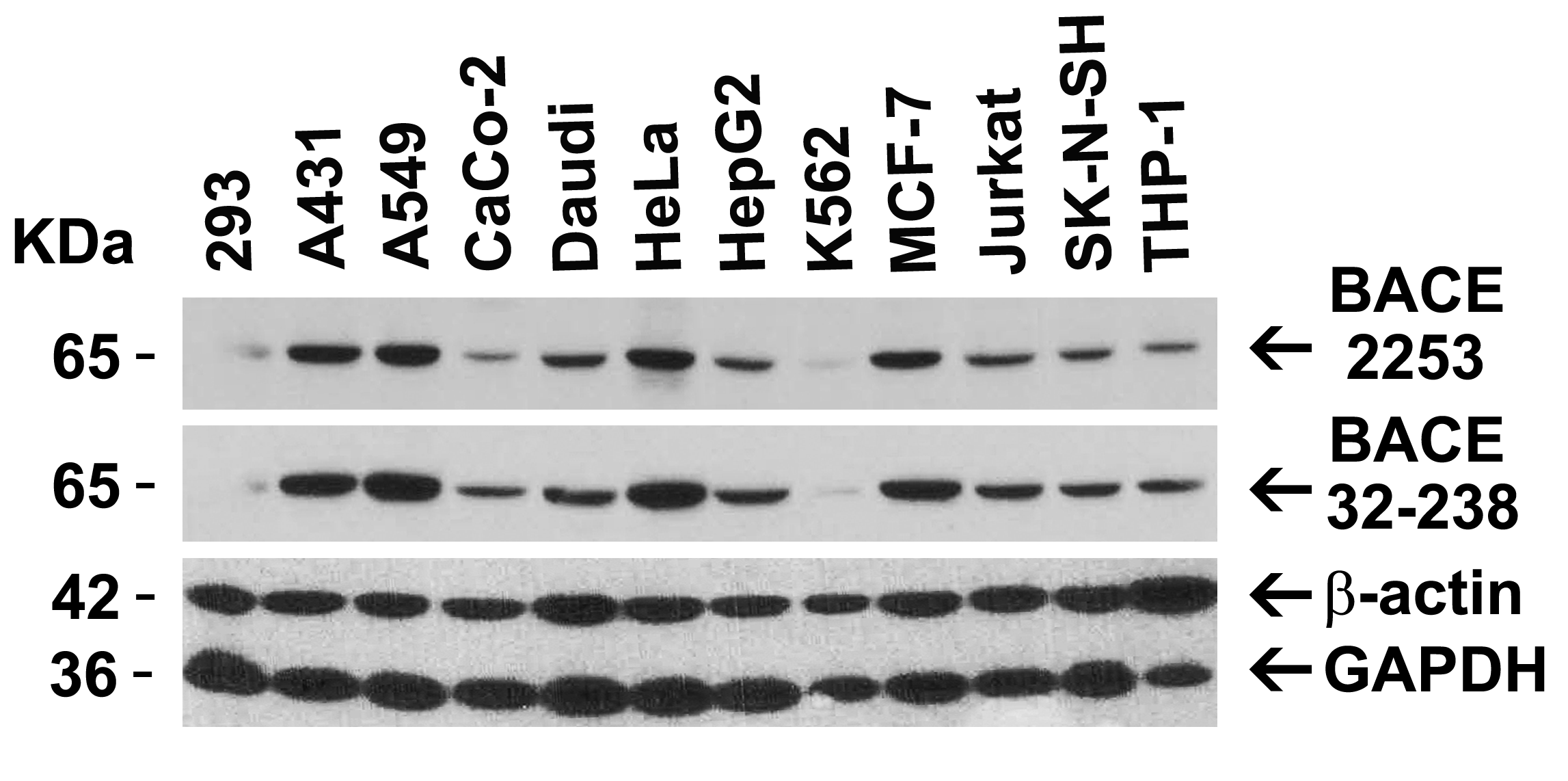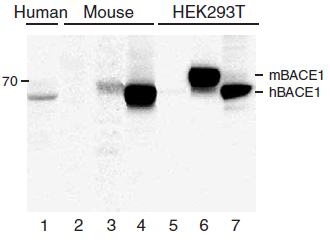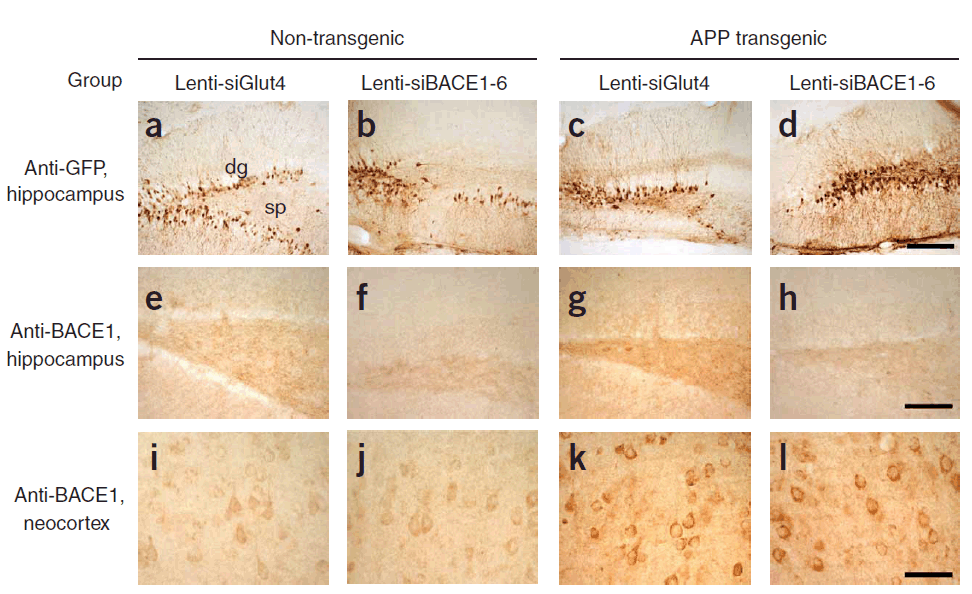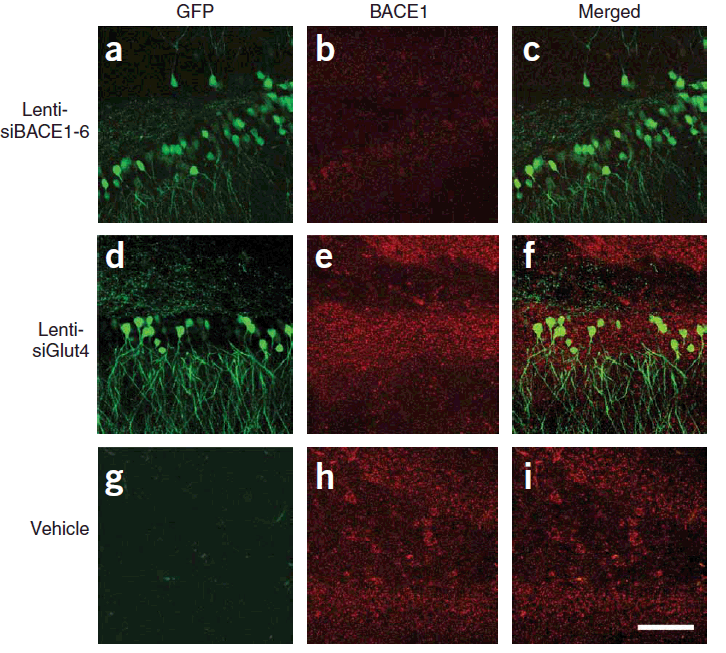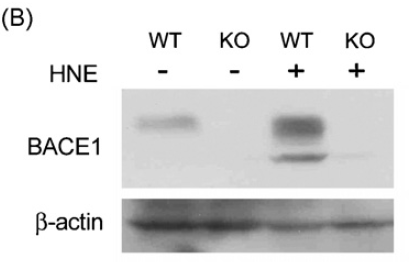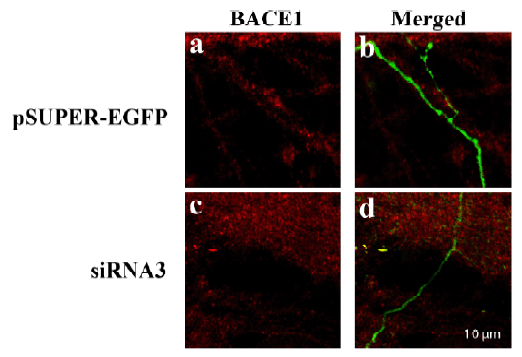BACE Antibody
| Code | Size | Price |
|---|
| PSI-2253-0.02mg | 0.02mg | £150.00 |
| PSI-2253-0.1mg | 0.1mg | £449.00 |
Overview
- Enzyme-Linked Immunosorbent Assay (ELISA)
- Immunohistochemistry (IHC)
- Western Blot (WB)
Images
Documents
Further Information
Antibody validated: Western Blot in human and mouse samples; Immunohistochemistry, Immunocytochemistry and Immunofluorescence in mouse samples. All other applications and species not yet tested.
- Vassar et al. Science 1999;286:735-41
- Hussain et al. Mol Cell Neurosci 1999;14:419-27
- Yan et al. Nature 1999;402:533-7
- Sinha et al. Nature 1999;402:537-40
The immunogen is located within the last 50 amino acids of BACE.
Observed: 65kD (Post-modification: 4 N-linked glycosylation)
Independent Antibody Validation in Cell lines (Figure 2) shows similar BACE expression profile in human cell lines detected by two independent anti-BACE antibodies that recognize different epitopes, 2253 against C-terminus domain and 32-238 against recombinant fragment protein. BACE proteins are detected in all the tested cell lines except K562 at different expression levels by the two independent antibodies.
KO validation (Figure 6,9): Anti-BACE antibody (2253) specificity was further verified by BACE KO mice (figure6) and KO cell line (figure9). BACE signal was not detected in BACE KO mice and KO cell line.
KD validation (Figure 7,8,10): Anti-BACE antibody (2253) specificity was verified by BACE specific siRNA knockdown. BACE signal in mouse brain injected with BACE siRNAs and DRG transfected with BACE siRNAs was disrupted in comparison with control.
Overexpression validation (Figure 6): Anti-BACE antibody (2253) detected high expression levels of BACE in 293 cells transfected with hBACE or mBACE (figure6) as compared to eGFP transfected cells.
References
- Singer et al. Targeting BACE1 with siRNAs ameliorates Alzheimer disease neuropathology in a transgenic model. Nat Neurosci. 2005;8(10):1343-9. PMID: 16136043
- Jo et al.Evidence that gamma-secretase mediates oxidative stress-induced beta-secretase expression in Alzheimer's disease. Neurobiol Aging. 2010;31(6):917-25. PMID: 18687504
- Hyun. RNA Interference Against BACE1 Suppresses BACE1 and A? Expression in PC12 Cells and DRG Neurons. Stanford Journal of Neuroscience. 2007; 1(1):2-8.PMID:
- Okada et al. Proteomic identification of sorting nexin 6 as a negative regulator of BACE1-mediated APP processing. FASEB J. 2010;24(8):2783-94PMID: 20354142
- Liu et al. Glu11 site cleavage and N-terminally truncated A beta production upon BACE overexpression. Biochemistry. 2002;41(9):3128-36PMID: 11863452
- Colombo et al. JNK regulates APP cleavage and degradation in a model of Alzheimer's disease. Neurobiol Dis. 2009;33(3):518-25PMID: 19166938
- Bettegazzi et al. ?-Secretase activity in rat astrocytes:translational block of BACE1 and modulation of BACE2 expression. Eur J Neurosci. 2011;33(2):236-43.PMID: 21073551
- Lichtenthaler et al. The cell adhesion protein P-selectin glycoprotein ligand-1 is a substrate for the aspartyl protease BACE1. J Biol Chem. 2003;278(49):48713-9PMID: 14507929
- Lee et al. Secretion and intracellular generation of truncated Abeta in beta site amyloid-beta precursor protein-cleaving enzyme expressing human neurons. J Biol Chem. 2003;278(7):4458-66PMID: 12480937
- Rockenstein et al. High beta-secretase activity elicits neurodegeneration in transgenic mice despite reductions in amyloid-beta levels: implications for the treatment of Alzheimer disease. J Biol Chem. 2005;280(38):32957-67. PMID: 16027115
- Catania et al. The amyloidogenic potential and behavioral correlates of stress. Mol Psychiatry. 2009;14(1):95-105PMID: 17912249
- Parisiadou et al.Homer2 and Homer3 interact with amyloid precursor protein and inhibit Abeta production. Neurobiol Dis. 2008;30(3):353-64PMID: 18387811
- Knock et al. SUMO1 impact on Alzheimer disease pathology in an amyloid depositing mouse model. Neurobiol Dis. 2018;110:154-165PMID: 29217476
- Debatin et al. Association between deposition of beta-amyloid and pathological prion protein in sporadic Creutzfeldt-Jakob disease. Neurodegener Dis. 2008;5(6):347-54.PMID: 18349519
- Gwon etal. Selenium attenuates A beta production and A beta-induced neuronal death. Neurosci Lett. 2010;469(3):391-5. PMID: 20026385
Related Products
| Product Name | Product Code | Supplier | BACE Peptide | PSI-2253P | ProSci | Summary Details | |||||||||||||||||||||||||||||||||||||||||||||||||||||||||||||||||||||||||||||||||||||||||||||
|---|---|---|---|---|---|---|---|---|---|---|---|---|---|---|---|---|---|---|---|---|---|---|---|---|---|---|---|---|---|---|---|---|---|---|---|---|---|---|---|---|---|---|---|---|---|---|---|---|---|---|---|---|---|---|---|---|---|---|---|---|---|---|---|---|---|---|---|---|---|---|---|---|---|---|---|---|---|---|---|---|---|---|---|---|---|---|---|---|---|---|---|---|---|---|---|---|---|---|---|



